
Publisher:
Bonnie King
CONTACT:
Newsroom@Salem-news.com
Advertising:
Adsales@Salem-news.com

~Truth~
~Justice~
~Peace~
TJP
Sep-09-2012 22:39

 TweetFollow @OregonNews
TweetFollow @OregonNews
A Lesson on Hope on the 30th Anniversary of the Sabra-Shatila Massacre (Graphic Photos)
Dr. Ang Swee Chai Special to Salem-News.comIs there hope for the Palestinians? They lost their country 64 years ago and found themselves in alien land which would not even grant them basic civil rights.
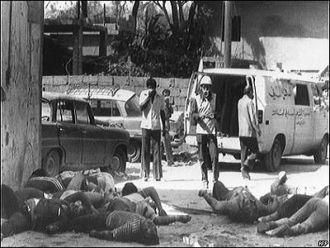 Images from various sources, all of the Sabra-Shatila Massacre |
(ROME) - This year, while Palestinian refugees in Lebanon prepare to commemorate the 30th anniversary of the Sabra-Shatila massacre, the country is receiving thousands of refugees fleeing from Syria. We pray that, with international resolve, the conflict will end soon and the Syrian refugees will be able to return home.
 Dr. Ang Swee Chai |
Sixty-four years ago, in 1948, Lebanon received another group of refugees; some of the 750,000 Palestinians fleeing the massacres and the destruction of the villages and towns in Palestine. They were put in tents and promised the right of return to their homes.
But most of Palestine was renamed Israel and so the refugees and their descendents remain in Lebanon, dispersed in 12 official UN-run refugee camps, forming part of the 4 million-strong Palestinian diaspora worldwide today.
For them, there was no enthusiasm from the Western powers to address the root cause of their dispossession and no practical support for their right to return to their ancestral homeland.
Every September, hundreds of Palestinians and friends from around the world meet in Shatila, at Martyr’s Square, where a thousand of those killed in Sabra-Shatila are buried. We mourn and remember those whose lives were cruelly cut off. In so doing we ensure that they will not be forgotten; we also pay homage to their families.
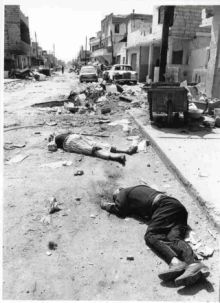
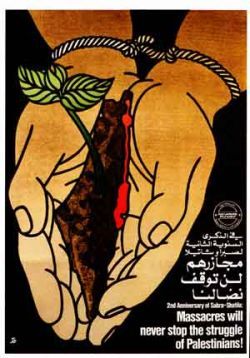
Thirty years ago, in August 1982, I arrived as a young volunteer surgeon to work in Gaza Hospital in Sabra-Shatila Palestinian refugee camp in South Beirut.
As a born-again fundamentalist Christian I grew up an ardent supporter of Israel. That summer I watched on television the relentless bombardment of Lebanon by Israeli war planes. Countless people were killed, among them many children. Hospitals, factories, schools and homes were reduced to heaps of rubble.
My pro-Israel Christian friends were unable to convince me that the people of Lebanon deserved to suffer and die because they harboured a terrorist group known as the PLO (Palestine Liberation Organisation).
I wanted to help the people in Lebanon, so when Christian Aid sent an appeal asking for a surgeon to help look after the wounded, I resigned from my hospital in Britain, and left for Beirut.
That was my first visit to the Middle East; I never knew Palestinians existed until then. The western popular press only told of the terrorist PLO, which hated Jews, planted bombs and hijacked planes.
They said that this group had built their base in Lebanon and that Israel was helping Lebanon to flush them out, even if Lebanon had to be flattened in the process. One Israeli spokesperson announced, "To make an omelette, one has first to crack eggs"!
I arrived in a Beirut that was devastated after 10 weeks of heavy bombardment. There was scarcity of food, water and medicine due to the military blockade. Homeless families flooded abandoned car parks and schools, and even slept on the road-side.
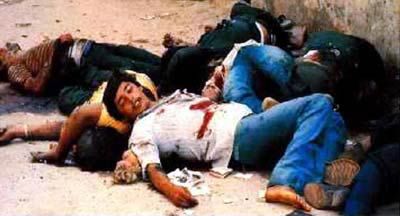
I was taken past Akaa Hospital, a five-storey building reduced to rubble and mangled wires. This hospital was at one end of Rue Sabra, the main street of Shatila Camp. At the other end was Gaza Hospital, which was still standing, despite the tenth and eleventh floor being wrecked by artillery.
Both were state of the art Palestine Red Crescent Society hospitals, and both were targeted despite flying International Red Cross flags. I was placed in Gaza Hospital to head the orthopaedic department and facilitate its re-opening.
Soon after my arrival the PLO was evacuated from the city. It was the price that Israel demanded to stop further aerial bombardment of Lebanon and lift the military blockade. Fourteen thousand able-bodied men and women from the PLO left Beirut with guarantees from the Western powers that their families left behind would be protected.
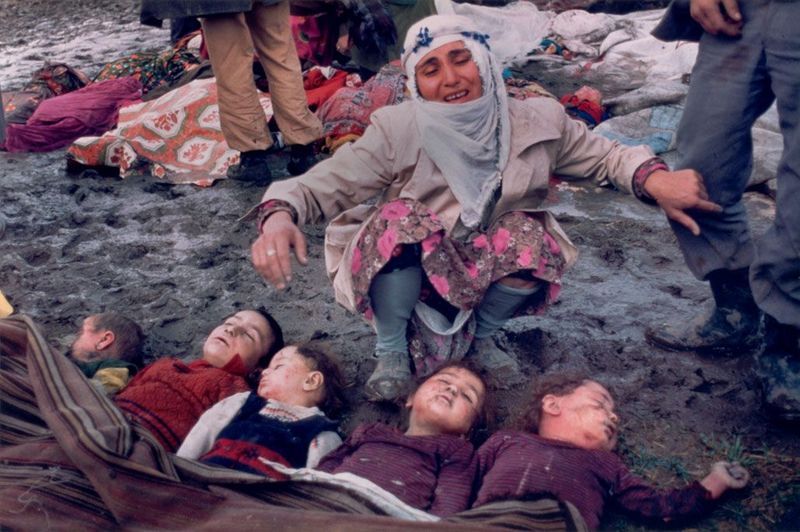
Some of those leaving were fighters, but others were PLO civil servants such as doctors, lecturers, trade unionists, media personnel, engineers and technicians; the PLO was the government in exile of the Palestinians.
Thus, fourteen thousand families in Lebanon lost their breadwinner - often the father or the eldest brother in addition to those killed by the bombs.
This ceasefire lasted only three weeks. The multinational peace-keeping force, entrusted by the ceasefire agreement to protect the civilians of Beirut, withdrew abruptly. On 15 September several hundred Israeli tanks drove into South and West Beirut.
Some of them ringed and sealed Shatila Camp to prevent the inhabitants from fleeing. The Israelis sent their allies, a group of Christian militiamen, into the camp. When the tanks withdrew from the perimeter of the camp on the 18 September, they left behind 3,000 dead civilians.
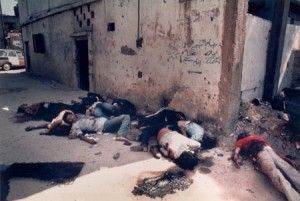
Our hospital team had worked non-stop for the previous 72 hours, but we were ordered at gun point to leave our patients and were marched along Rue Sabra out of the camp. As I emerged from the basement operating theatre, I learnt the painful truth. While we were struggling to save a few dozen lives, people had been killed by the thousands. Some of the bodies were already rotting in the hot Beirut sun.
The images of the massacre are seared on my memory. They include dead and mutilated bodies lining the camp alleys, bodies which only a few days before were living human beings full of life and hope, rebuilding their homes, trusting that they would be left in peace to raise their young ones after the evacuation of the PLO.
These were the people who had welcomed me into their broken homes, serving me Arabic coffee and whatever food they found; it was simple fare but given with warmth and generosity.
 |
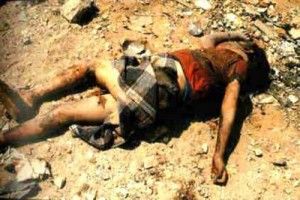
They shared with me their broken lives and how they came to be refugees in Lebanon.
They showed me faded photographs of their homes and families in Palestine before 1948 and the large house keys they still treasured.
The women shared with me their beautiful embroidery, each with motifs of the villages they left behind.
Many of these villages were destroyed by the nascent Israeli state after they left.
There were patients we failed to save and those brought in dead to the hospital. They left behind orphans and widows. A wounded mother begged us to take down the hospital’s last unit of blood from her to give to her child. She died shortly afterwards. The rape of women before they were killed left cruel psychological scars on their children who survived.
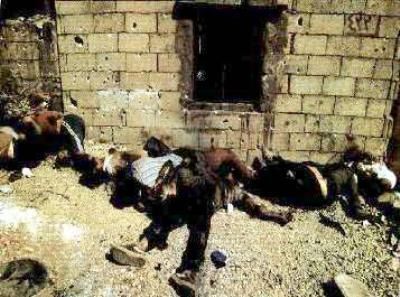
The frightened faces of families rounded up by gunmen; the desperate young mother who tried to give me her baby to take to safety; the stench of decaying bodies as mass graves continued to be uncovered day after day, will never leave me.
The piercing cries of women who discovered the remains of their loved ones from bits of clothes or refugee identity cards as more bodies were found continue to haunt me.
The people of Sabra-Shatila returned after the massacre to rebuild their homes once more. Gaza Hospital re-opened. But their courage was rewarded with yet more violence. Shatila, Burj-el-Barajneh, and Rashiddyeh camps were besieged and attacked from 1985 to 1988, during which time 2,500 refugees were killed and 30,000 were made homeless.
Nahr-el-Bared Camp in the north of Lebanon, home to 40,000 Palestinians, was flattened by the Lebanese Army in 2007 and is yet to be rebuilt completely. The Palestinian refugee camps of Lebanon are the most squalid and deprived in the Middle East.
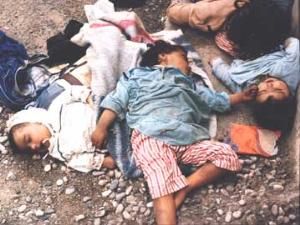
Add to this the Lebanese law prohibiting Palestinians from taking up 30 professions and 40 artisan trades outside the refugee camps, and it is not difficult to see how the younger generations despair; some youngsters drop out of school to look for manual labouring work. Palestinians are also prohibited from owning or inheriting properties.
With these unjust laws in place, they are confined to the refugee camps with no escape. Denied the right of return to their homes in Palestine, they are not only born refugees, they will also die refugees and so will their children.
For me, one painful question needs to be answered. Not why they die, but why did they die as refugees? After 64 years, how can we allow a situation where a person’s only claim to humanity is a refugee identity card? This question has haunted me for 30 years. It has yet to receive an adequate answer.
However, in recent years, as we journey along Rue Sabra as part of our annual commemoration of the Sabra-Shatila massacre, our weary footsteps have been lightened by the participation of hundreds of young Palestinians. They are the post-massacre generation, reminding us that there is life after that horror.
 |
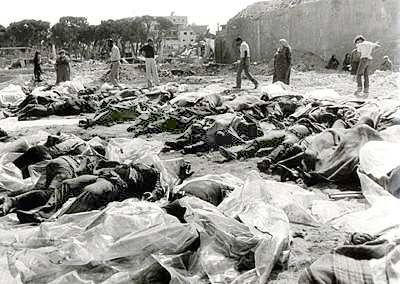
Full of eagerness and courage, in defiance of those who worked so hard to obliterate them, they have survived and will continue to survive.
Is there hope for the Palestinians? They lost their country 64 years ago and found themselves in alien land which would not even grant them basic civil rights. Those who live in the occupied West Bank and Gaza Strip find themselves under siege and imprisoned behind the Wall.
Palestinian land is stolen daily for illegal Israeli settlements and military use. In Shatila, the younger generation enter this world in the shadow of the ugly massacre. The wounds have not healed.
But there is hope. As a people the Palestinians have survived against all the odds. If you talk to the youngsters in the refugee camps, you will know that they have never forgotten Palestine. They will tell you that even though they might not make it back to Palestine in their life-time, their children will. Supporters and friends around the world increase in number daily, inspired by their courage and resilience.
For those of us who are privileged to enter their lives and receive their generous hospitality, our gratitude knows no bounds. We discover true friendship. We have learnt that poverty and deprivation are no obstacles to human dignity. We admire their courage in their daily struggles. When their children embrace us, new life and hope return.
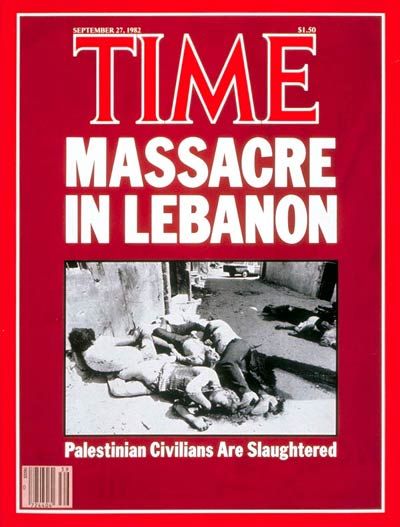
One such occasion happened last year when a group of young Palestinians put on an event for those of us who came to join the commemoration of the Sabra-Shatila massacre. They had no money and no sponsors, so they held the event in Martyr’s Square in the evening.
It was poetry reading with hip-hop; instant painting of the silhouettes of their friends onto the whitewashed walls; and traditional dabkeh dancing. Nearly all of them were born after the massacre, so they asked me to give them my firsthand account.
I recalled the events of 1982, ending with the following:
| “ |
"A few days after the massacre, I walked down Rue Sabra towards Gaza Hospital. The stench of decaying human flesh was unbearable. Survivors were identifying the remains of their loved ones. A group of kids spotted me and called out ‘Doctora Sine’ (Chinese Doctor). Most of them were orphans, destitute and homeless. Suddenly they stood in front of me and asked for their pictures to be taken. As I released my camera shutter, they raised their hands in a victory sign and said ‘We are not afraid’. That picture has as background broken buildings, mass graves, and hopelessness but the children in the foreground defied them with their hands raised in a victory sign. I have been back to Lebanon many times but have never found those children again. They might have perished. But they will always be my inspiration. During the darkest hour, I will see them with their hands raised up, defying intimidation and death, poised to regain the dignity they had been robbed of." |
” |
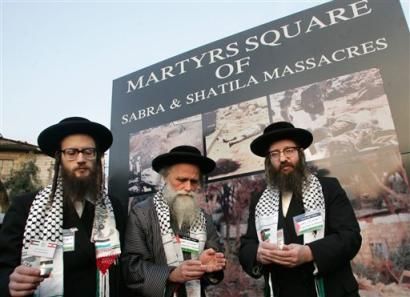
Since then, I have met many more children in Gaza and the West Bank. They are just as courageous and precious as their peers in Lebanon. They have suffered so much but remain fearless and steadfast.
On this, the 30th anniversary of the Sabra-Shatila massacre, we need to reflect on how the Palestinians have built and rebuilt their lives courageously over the last 64 years, and how we as friends can support them in their struggle for justice. We will look through our tears to see the wonderful young generation. Life has returned to Shatila. After thirty years with the Palestinians, I have learnt this lesson on hope.
Dr Ang Swee Chai Middle East Monitor, 01 September 2012.
Dr Ang Swee Chai is the author of "From Beirut to Jerusalem", and the Patron and co-founder of British charity Medical Aid for Palestinians.
- Una lección de esperanza en el trigésimo aniversario de la masacre de Sabra y Chatila
Special thanks to Dr. Ang Swee Chai and Silvia Cattori
 |
 |
 |
 |
Articles for September 8, 2012 | Articles for September 9, 2012 | Articles for September 10, 2012

googlec507860f6901db00.html
Salem-News.com:



Terms of Service | Privacy Policy
All comments and messages are approved by people and self promotional links or unacceptable comments are denied.
[Return to Top]
©2025 Salem-News.com. All opinions expressed in this article are those of the author and do not necessarily reflect those of Salem-News.com.